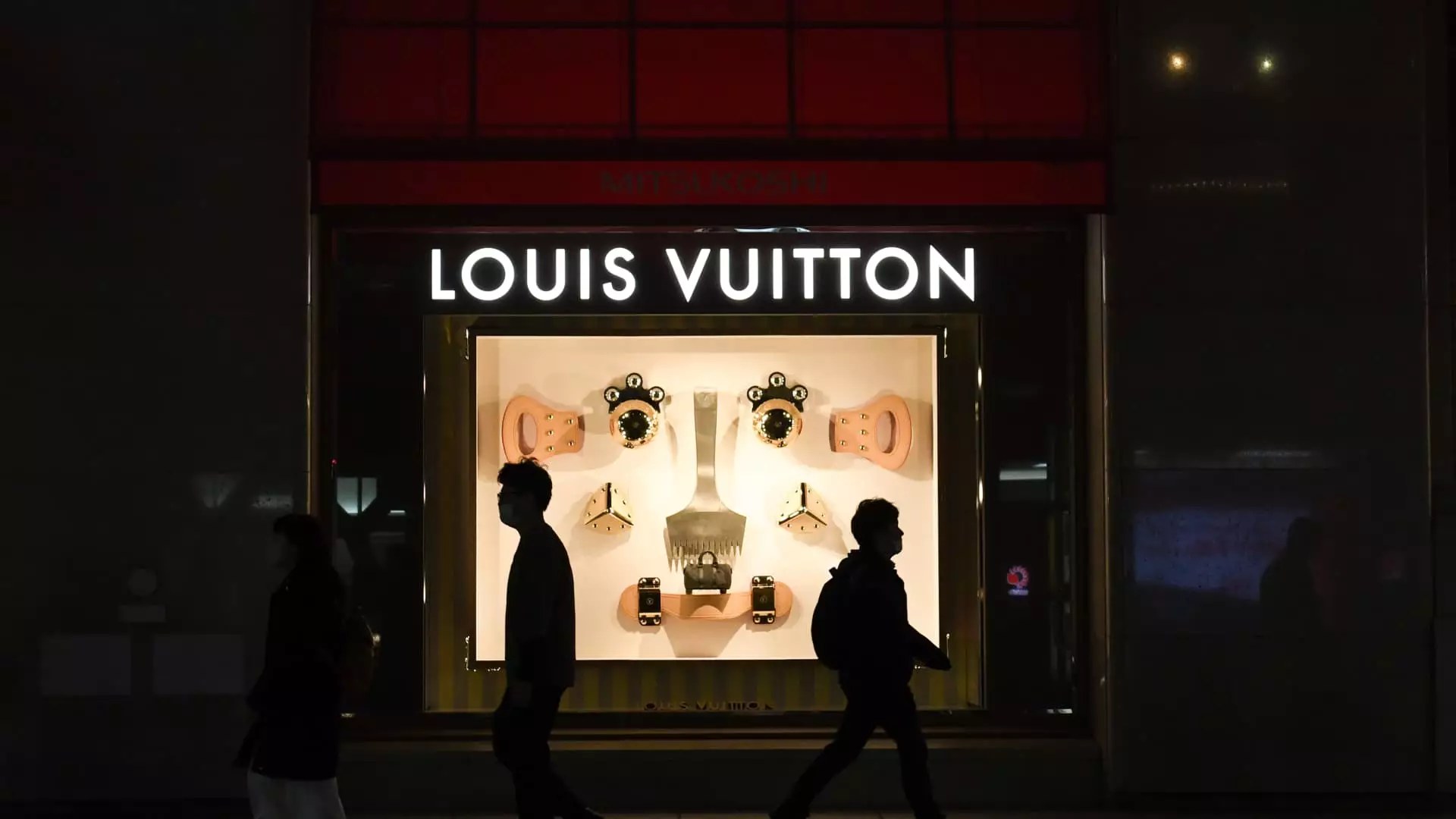In a shocking turn of events, shares of LVMH fell up to 8% on a seemingly routine Tuesday morning, propelling rival Hermès into the spotlight. This decline was not just a fleeting moment of market volatility but a significant signal of deeper issues within the luxury sector. Sales figures released for the first quarter revealed an unexpected 3% year-on-year decrease, which starkly contrasted with analyst predictions suggesting slight growth. This disparity mirrors the growing chasm between consumer expectations and actual market performance, prompting some to wonder: is the luxury brand paradigm shifting, or is LVMH merely facing a temporary setback?
The pain was felt across the entire luxury market, with major players like Kering and Burberry also seeing their shares dip by substantial margins—2.5% and 4.4%, respectively. Financial analysts are dissecting this downturn, realizing it isn’t an isolated incident but rather a reflection of wider economic uncertainties that are impacting consumer spending habits. Despite these seeming catastrophes, what feels most alarming is that these updates originate from one of the most iconic names in the luxury industry, raising questions about the sustainability of luxury brands amidst fluctuating consumer interests.
Sector-wide Shockwaves: More than Just LVMH
The reverberations of LVMH’s staggering results extend far beyond its individual share value. In the luxury sector, such downturns can set precedents, initiating a domino effect where investors grow increasingly wary. According to market metrics, the overall luxury goods sector experienced a significant reevaluation, compounded further by shifts in consumer sentiments stemming from economic pressures, particularly in crucial markets like the United States and China.
Citi analysts, in a rather grim assessment, confirmed there is “not much to cheer for at the luxury bellwether.” Their unsettling predictions highlight that it may be a challenge to fuel growth in the latter half of the year, especially considering the current economic climate. This suggests that the luxury industry is not just facing a momentary glitch in its operations but is at risk of encountering systemic issues that could impact future profitability for the entire sector.
Geopolitical Tensions: The Unseen Playmaker
The luxury goods market is notoriously intertwined with geopolitical events, and LVMH’s flagging performance underscores this volatile relationship. The sharp 9% decline in its wines and spirits division is symptomatic of broader geopolitical tensions and trade policies, particularly stemming from U.S. tariffs imposed on goods. With the market relying heavily on a complex, global supply chain, luxury brands are feeling the weight of policy decisions that affect consumer demand significantly.
As LVMH grapples with not just its identity as the world’s largest luxury house but also its vulnerability to shifting geopolitical winds, the question arises: can consumer loyalty withstand the pressures of changing trade policies? Such uncertainties beg for an agile approach among luxury brands, one that not only responds to economic fluctuations but anticipates them.
The Aspirational Buyer: A Vulnerable Demographic
LVMH’s Chief Financial Officer, Cécile Cabanis, acknowledged that aspirational consumers are often more susceptible during economic downturns. This demographic, which is typically drawn to luxury products as symbols of status and success, may increasingly pull back on their spending during less certain times. If brands aim to cater to this fragile customer base, there is an essential need for strategic positioning tailored to instill confidence.
The luxury market has inherently different dynamics compared to mid-range retail. High-end brands can generally afford to pass price increases onto wealthy consumers. However, as analysts warn of an economic downturn induced by tariffs, it raises concerns about whether even the affluent will choose to downscale their purchasing habits if the economy tightens.
The Path Forward: Repricing and Innovation
Amidst these challenges, optimism lies in LVMH’s acknowledgment of potential price adjustments as a strategy to buffer against unforeseen impacts. The concept of repricing to offset inflation or currency fluctuations signifies an adaptive mindset within one of the industry’s leading giants. However, will this strategy be enough?
While luxury brands have traditionally weathered economic storms better than other sectors, analysts are now urging caution. A blend of innovation and responsiveness may be fundamental for these brands to maintain their market positions. In an age where consumer values are rapidly evolving toward sustainability and social responsibility, it is essential for luxury brands to not only listen but respond effectively to an increasingly discerning customer base.
LVMH’s dip in share price is not merely a momentary lapse but a clarion call for the entire luxury sector. The time has come for self-reflection and proactive measures, as the industry stands at a pivotal crossroads amidst economic uncertainty and evolving consumer landscapes.

